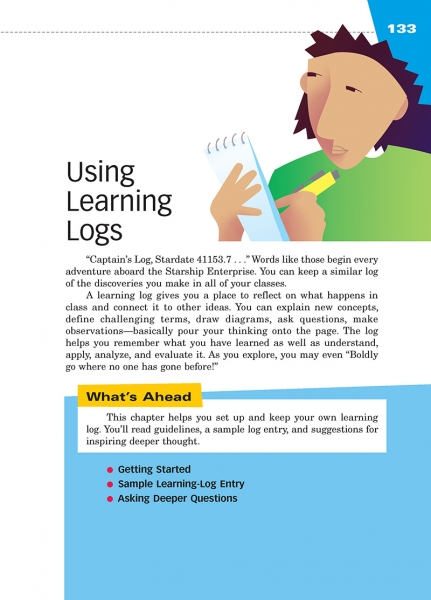Page 133 from

Start-Up Activity
Ask students to name their favorite movie. Afterward, ask them why it is their favorite. You will probably witness a lot of "thinking out loud." We all have preferences, but when pressed for reasons, must sort through our thoughts to find evidence and organize a response. Point out to students that they often do this: They figure out what they think in the very process of discussing it aloud.
The same is true with writing. One of the best ways to figure out what you think about something is to write about it. Keeping a learning log for a class will deepen the writer's understanding of the material. This chapter will show how.
Think About It
“I don't know what I think until I write it down.”
—Joan Didion

Start-Up Activity
Ask students to name their favorite movie. Afterward, ask them why it is their favorite. You will probably witness a lot of "thinking out loud." We all have preferences, but when pressed for reasons, must sort through our thoughts to find evidence and organize a response. Point out to students that they often do this: They figure out what they think in the very process of discussing it aloud.
The same is true with writing. One of the best ways to figure out what you think about something is to write about it. Keeping a learning log for a class will deepen the writer's understanding of the material. This chapter will show how.
Think About It
“I don't know what I think until I write it down.”
—Joan Didion